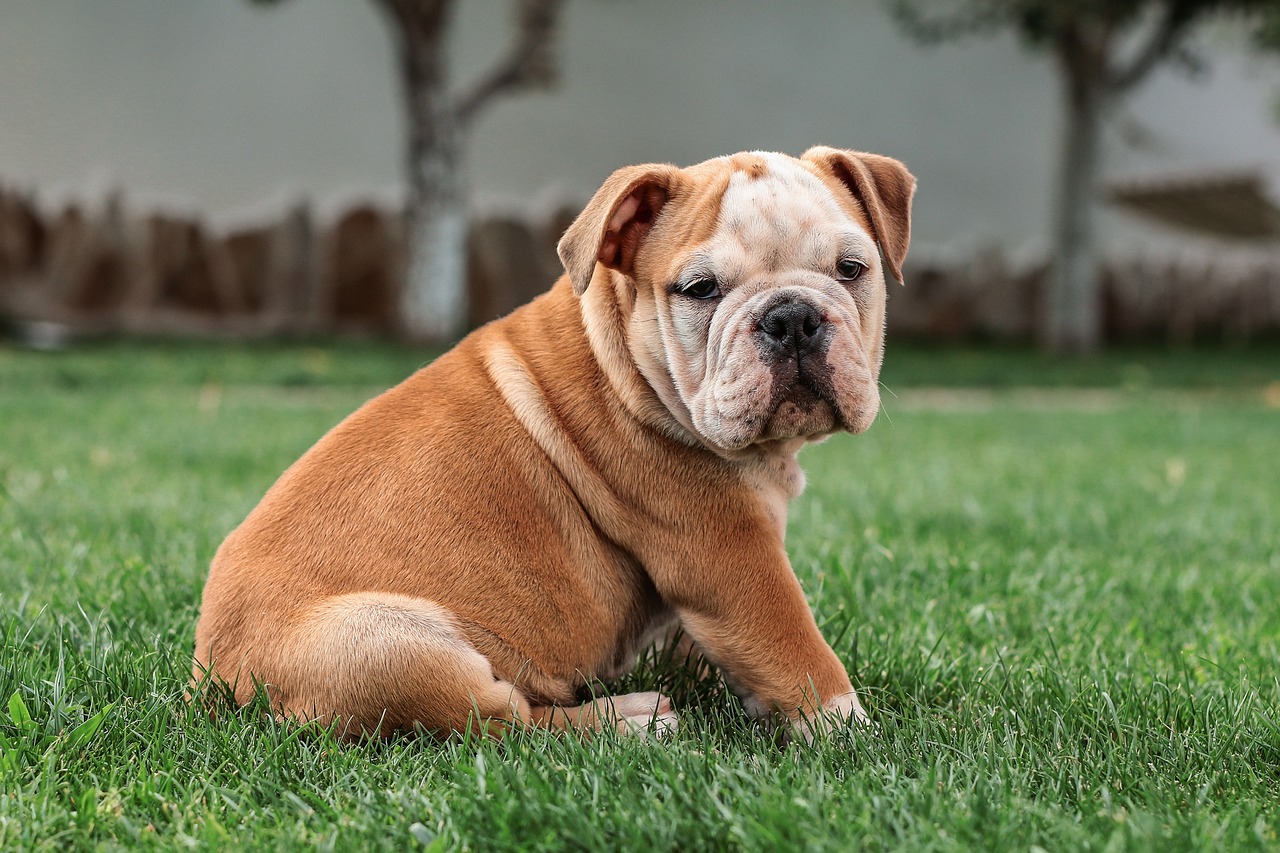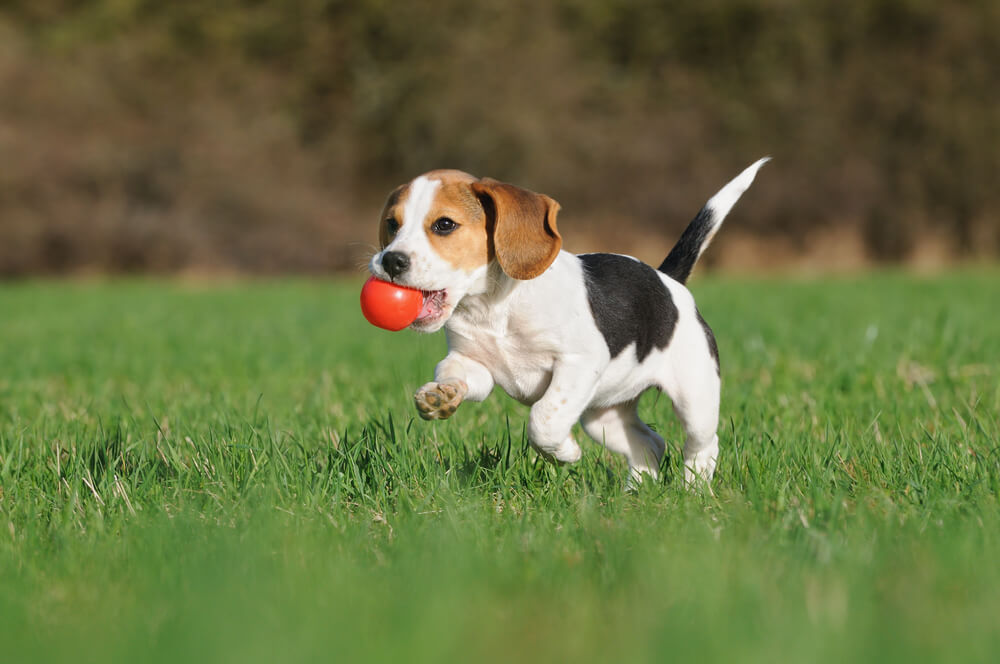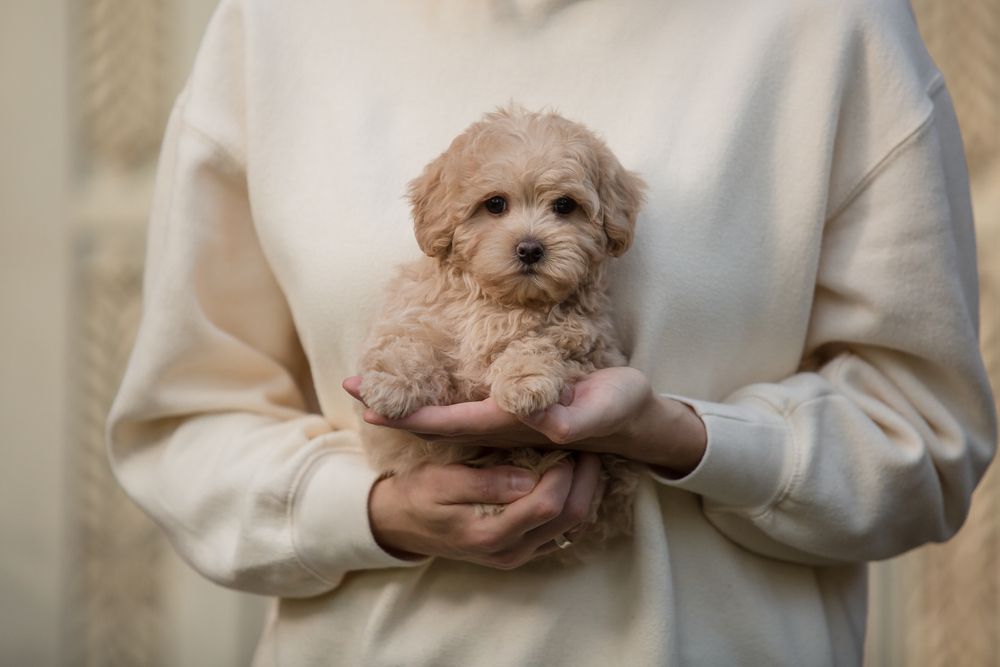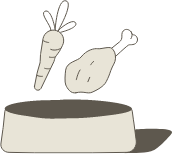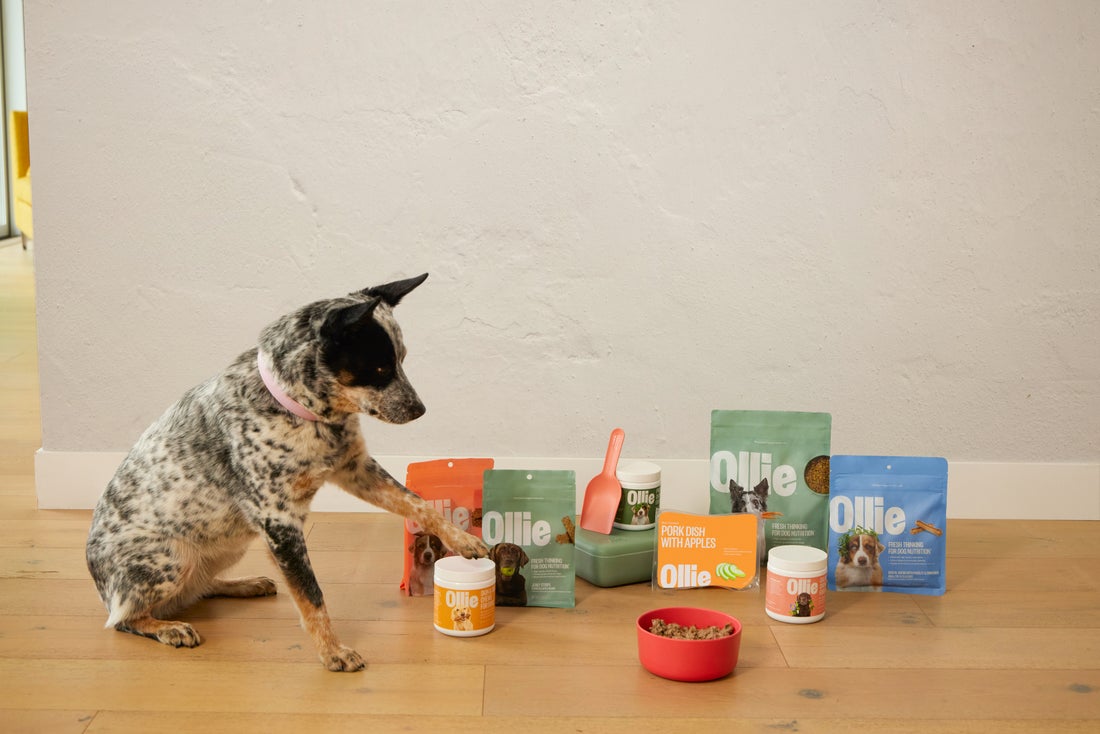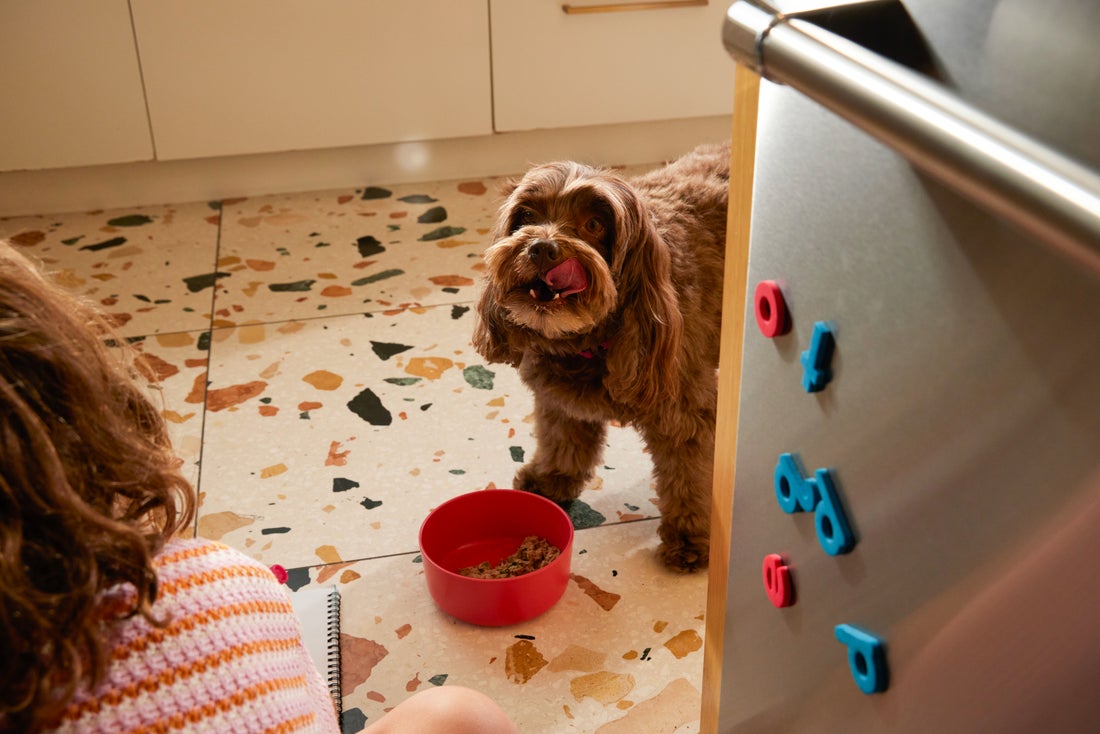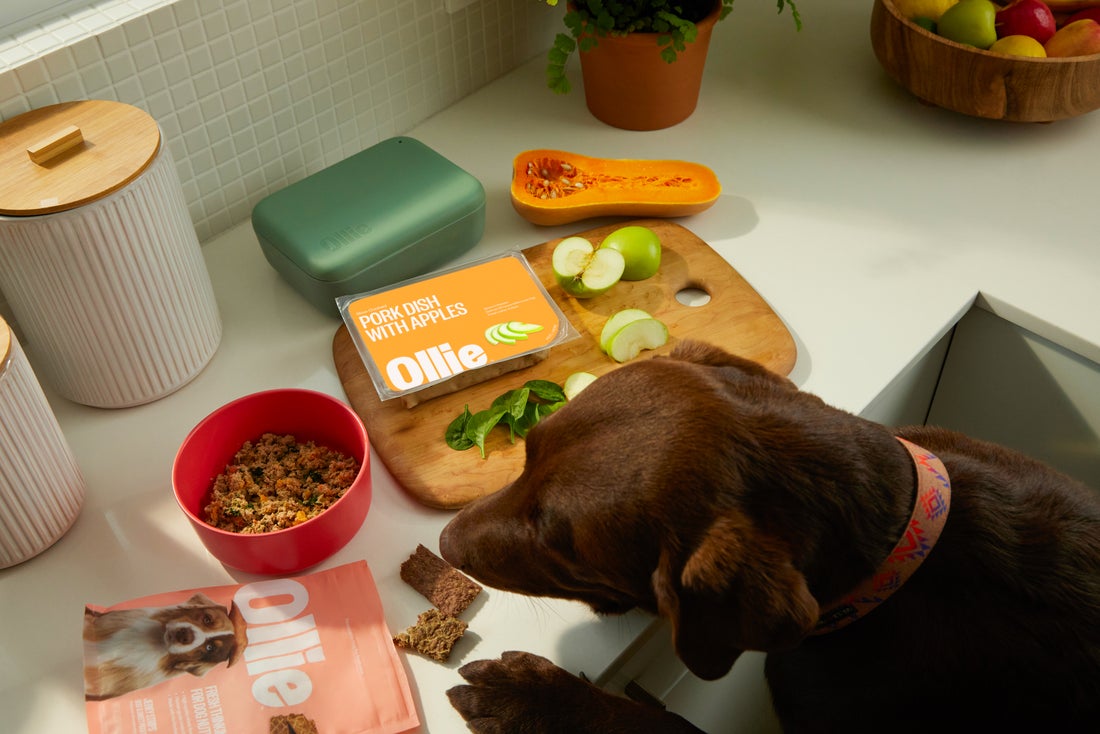Hey Ollie blog readers! We’re offering you an exclusive 60% OFF your starter box! Try now!
If you’ve ever watched your dog suddenly drag their butt across the carpet, you know how surprising (and honestly, a little embarrassing) it can be. But for your dog, scooting isn’t just a weird habit, it’s their way of telling you something feels off back there, whether it’s pressure, itchiness, or just something stuck.
Scooting usually means your dog’s rear end is itchy, irritated, or uncomfortable. Sometimes it’s just a bit of stuck poop. If your dog yelps when sitting or touching their rear, or if you notice swelling, it could be a sign of a painful infection. The good news is, many cases can be helped at home with a few simple steps.
That’s where smart home remedies for dog scooting come in. From boosting fiber to gentle cleaning to feeding a diet that supports good digestion, there’s a lot you can do to help your dog feel better, and keep the carpet clean too.
One thing many pet parents don’t realize is how much diet plays into scooting. Firm, healthy poop naturally helps empty your dog’s anal glands, which means less discomfort and less butt-dragging. That’s why feeding a fresh, fiber-rich meal — like Ollie fresh dog food — can be a big part of solving the problem for good.
Why Dogs Scoot: The Most Common Reasons
When your dog scoots across the floor, they’re not just trying to entertain you, they’re trying to fix an itch or pressure they can’t scratch any other way. Here are the most common reasons your dog might be dragging their behind:
Full or Irritated Anal Glands
This is the big one. Dogs have two small scent glands near their anus that naturally empty when they poop. If their stool is too soft or they’re not pooping enough, these glands can fill up, get irritated, or even infected. Scooting is their way of trying to empty them on their own.
Allergies or Itchy Skin
Dogs with seasonal or food allergies often get itchy all over, including around their backside. Licking, chewing, and scooting can be a sign their skin is irritated or inflamed. If scooting is tied to ongoing itchiness, allergy testing (or an elimination diet) may be worth discussing with a vet.
Parasites
Worms, especially tapeworms, can cause itchiness around your dog’s rear end. If you see small rice-like bits near your dog’s tail, worms could be the culprit.
Stuck Debris or Dirty Fur
Sometimes scooting is as simple as a bit of poop or dirt stuck in the fur around your dog’s bottom. Long-haired dogs are more likely to need a cleanup now and then.
Poor Digestion or Low Fiber
Soft or loose stool often means the anal glands don’t get the gentle pressure they need to empty on their own. That’s why dogs with frequent soft poop may scoot more than dogs with firm, healthy stools.
Most of these causes have simple fixes you can try at home. In the next section, we’ll break down the best home remedies for dog scooting that really help.
Best Home Remedies for Dog Scooting
Once you know why your dog is scooting, you can try a few gentle fixes at home. The right home remedies for dog scooting can help your dog feel better fast, and keep them from dragging their butt across your favorite rug.
- Add More Fiber & Improve Diet
Firm, well-formed poop is nature’s way of helping your dog express their anal glands naturally. Extra fiber helps bulk up stools and naturally press on those glands during a potty break.
Try adding:
- A spoonful of plain pumpkin puree (no added sugar or spices)
- A bit of cooked green beans or carrots
- Or switch to a fresh, fiber-friendly diet like Ollie gently cooked recipes, which use real veggies and clean protein to support healthy digestion.
Just a heads-up: You won’t see changes overnight. It may take a few days to a week for your dog’s poop to firm up and for scooting to improve after adjusting their diet or adding fiber.
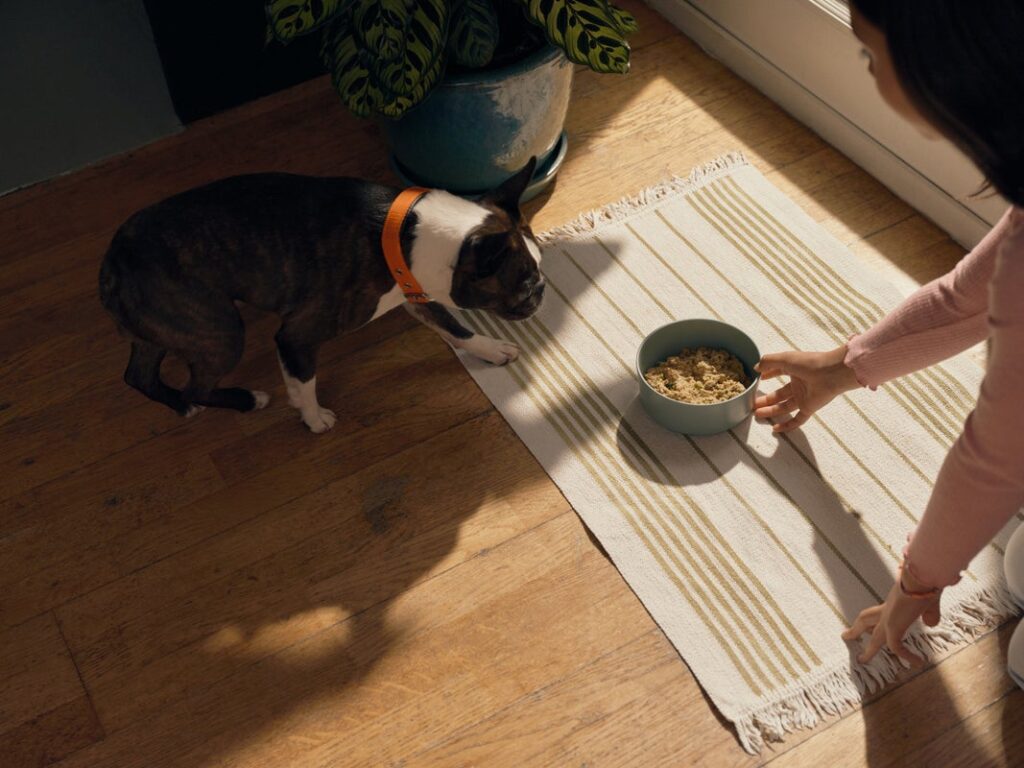
- Keep Their Rear End Clean
A quick wipe with a warm, damp cloth or an unscented pet wipe can clear away stuck debris that causes irritation. For long-haired dogs, trim the fur around the back end to prevent mats and mess.
- Give a Soothing Bath
A mild oatmeal bath can calm itchy skin, especially if your dog’s scooting is allergy-related. Make sure to dry them thoroughly afterward.
- Express Anal Glands (Carefully)
Some owners learn how to gently express their dog’s anal glands at home, but this isn’t for everyone. If you’re not comfortable, ask your vet or a professional groomer to do it. Never force it if you’re unsure.
- Deworm If Needed
If you suspect worms (especially if you see small white bits in their poop), talk to your vet about a safe dewormer. Don’t reach for a random store product, some aren’t effective or safe for all dogs.
- Try Probiotics
A healthy gut supports firm stools and smooth digestion. Adding a vet-approved probiotic can help keep your dog’s belly balanced, and that means fewer scooting issues.
These simple steps can solve mild scooting for many dogs. But if your dog keeps dragging their butt no matter what, the next section explains what else you can do to stop it long-term.
Try Our Probiotic Supplement Chews!
How to Stop a Dog from Scooting Long-Term
A single scoot isn’t the end of the world, but if your dog keeps doing it, you’ll want to fix the root cause so they’re comfortable and your rugs stay clean.
Here’s how to help prevent scooting from becoming a repeat routine:
Feed Enough Fiber
Soft stool is one of the biggest reasons dogs have trouble emptying their anal glands on their own. A little extra fiber firms up poop and helps do the job naturally. Switching to a real, balanced diet, like Ollie fresh food, which includes whole veggies and gentle fiber, makes this easy.
Keep Your Dog at a Healthy Weight
Overweight dogs may have more trouble with scooting because extra weight can add pressure to their glands. Keeping your pup at a healthy weight helps digestion and reduces strain.
Stay on Top of Grooming
Regular brushing and a quick trim around your dog’s rear end can help prevent stuck fur or debris. For some dogs, routine trips to a groomer for anal gland checks are worth it too.
Keep Parasites in Check
Regular deworming and flea prevention help cut down on scooting linked to parasites. Check your dog’s stool now and then, especially if they spend time at parks or around other animals.
Stick to Good Hygiene
Wipe your dog’s rear if they have soft stools or long fur. Clean bedding and a tidy potty area help too.
A little daily care plus the right food can make a big difference for your dog’s belly and butt.
When to Call the Vet for Scooting
Most mild scooting can be fixed with simple home care, but sometimes it’s a sign something more serious is going on. If you notice any of these red flags, it’s time to get your vet involved:
Signs It’s Time for Professional Help
- Constant Scooting: If your dog keeps scooting for days even after trying home fixes, their anal glands may be infected or impacted.
- Bad Smell or Discharge: A foul smell or any pus near your dog’s rear end usually means an infection that needs treatment.
- Swelling or Pain: If your dog cries out, snaps when you touch their back end, or has visible swelling, see your vet soon.
- Blood: Any sign of blood means it’s time to get help right away.
- Worms or Parasites: If you see rice-like segments or worms in your dog’s stool, your vet can prescribe the right dewormer.
Vets can safely express impacted glands, treat infections, or figure out if allergies or other conditions are causing repeat scooting. And if food is part of the problem, they can help you pick a diet — like Ollie fresh dog food — that keeps digestion smooth and stools firm enough to help prevent gland problems in the first place.
Simple Dog Scooting Prevention Tips
Once you’ve stopped the scooting, the goal is to keep it from coming back. Small habits at home can help your dog stay comfortable, and save your rugs from another butt slide.
Keep Rear Fur Trimmed and Clean
If your dog has longer fur, trim around the back end to help prevent bits of poop or dirt from getting stuck. A quick wipe after messy bathroom breaks can help too.
Feed a Consistent, Fiber-Rich Diet
Good digestion starts with what goes in the bowl. A balanced diet with real veggies and gentle fiber keeps stools firm enough to help express anal glands naturally. Many owners switch to Ollie fresh food for exactly this reason, it’s easy to digest and keeps poops healthy.
Wash Bedding Often
Clean blankets, beds, and living spaces cut down on allergens and bacteria that could irritate your dog’s skin or backside.
Stay Up to Date on Parasite Prevention
Regular flea control and vet-approved deworming keep parasites from causing butt itchiness and scooting.
Keep an Eye Out for Changes
Sometimes scooting is your first clue that something’s off. If you notice more licking, odd smells, or soft stool that sticks around, check in with your vet to rule out anything bigger.
A few small tweaks at home, plus good food and routine checks, can help keep your dog comfy and scoot-free.
FAQs About Dog Scooting
Why is my dog scooting across the floor but acting normal?
Sometimes scooting is just your dog’s way of scratching an itch. A little stuck poop, mild irritation, or full anal glands are common causes. If your dog seems fine otherwise and the scooting stops after you clean them up or add a bit more fiber, it’s usually nothing serious.
Does scooting mean my dog has worms?
Not always, but it can. Tapeworms are the most common culprit, look for tiny white segments near your dog’s tail or in their stool. If you suspect worms, talk to your vet for a safe dewormer instead of guessing with an over-the-counter option.
What’s the best home remedy for dog scooting?
Most vets agree: adding fiber and feeding a good-quality, balanced diet is the best long-term fix. Wiping your dog’s rear end, giving a soothing bath, or checking for debris can help too. For many dogs, switching to fresh food like Ollie gently cooked recipes is a big part of the solution because it helps firm up poop naturally.
Should I express my dog’s anal glands at home?
Some owners learn how to do this safely, but if you’re not sure, it’s better to have a vet or groomer handle it. Squeezing too hard or doing it wrong can hurt your dog or cause infection.
How can I stop my dog from scooting for good?
Focus on what’s causing it in the first place, keep their digestion healthy, add fiber, keep their rear clean, and stay on top of routine care like grooming and parasite prevention. Good food and regular checks are the best long-term scooting remedy.
Tagged As:
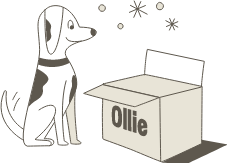
The nutrition your dog needs,
the food they want.

Enjoying our articles? Subscribe our Newsletters and get new articles directly to your inbox
You might also like
18 July 2025
6 MINS READ
Can You Mix Fresh Dog Food With Kibble?
If you’re feeding your dog kibble but want to upgrade their bowl, you’re not alone. Many pet parents ask if they can mix fresh dog food with kibble to get some of the benefits of fresh food wi…
by Ollie Pets
18 July 2025
5 MINS READ
Does Fresh Dog Food Help With Weight Loss?
If you’ve noticed your dog carrying a few extra pounds, you’re not alone. According to the Association for Pet Obesity Prevention, over half of dogs in the U.S. are overweight or obese. Extra …
by Ollie Pets
18 July 2025
4 MINS READ
Is Fresh Dog Food Cooked or Raw?
When you hear “fresh dog food,” it’s normal to wonder if that means raw meat or something cooked. After all, fresh just means it’s not dry kibble or canned food packed with preservatives. …
by Ollie Pets
